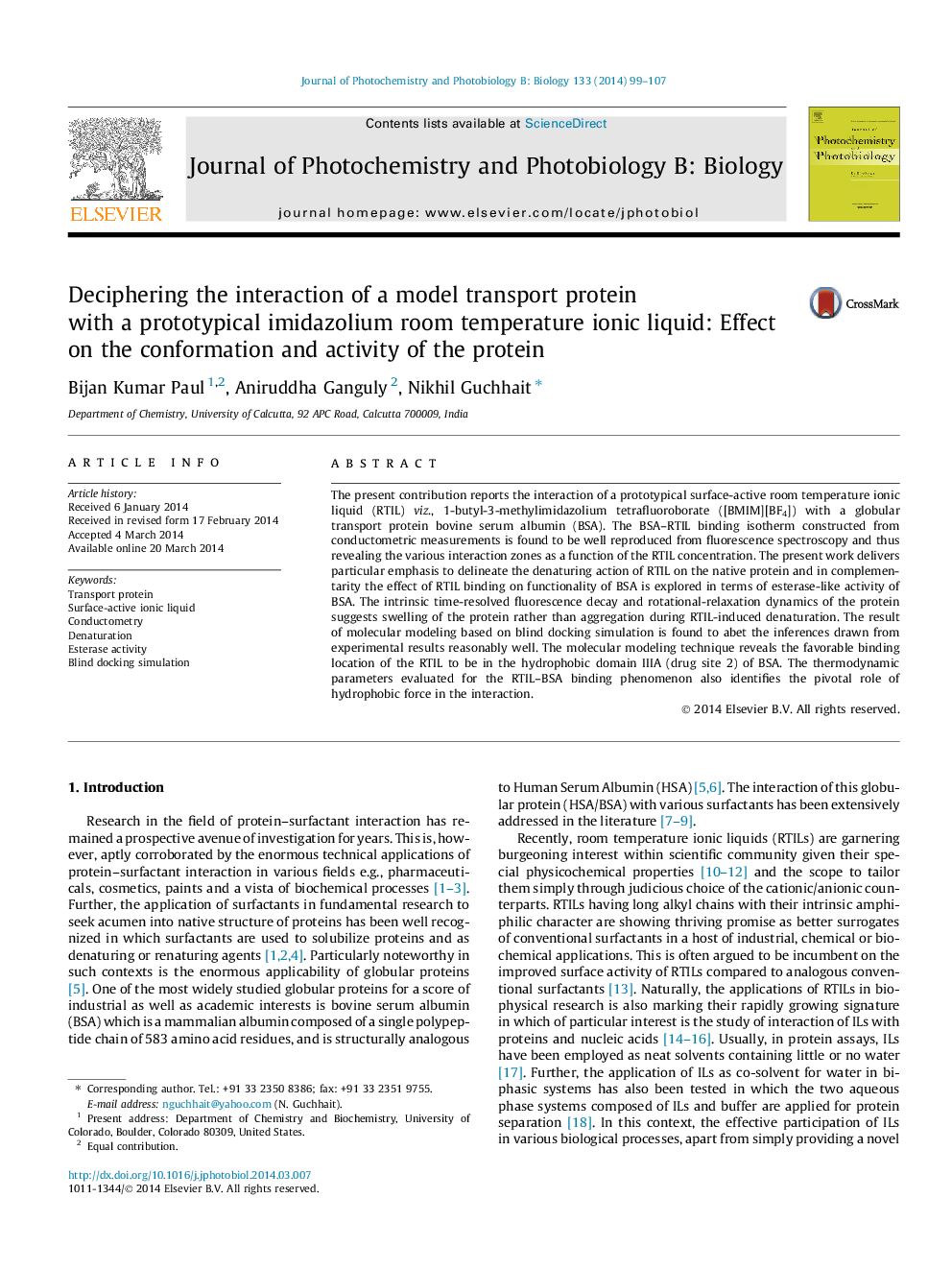| Article ID | Journal | Published Year | Pages | File Type |
|---|---|---|---|---|
| 30090 | Journal of Photochemistry and Photobiology B: Biology | 2014 | 9 Pages |
•Study of interaction of RTIL with protein BSA spectroscopically.•Influence of RTIL on the conformation and activity of protein.•AutoDock blind docking simulation unveils hydrophobic interaction between RTIL–BSA.•Swelling of the protein instead of multimer formation with RTIL.
The present contribution reports the interaction of a prototypical surface-active room temperature ionic liquid (RTIL) viz., 1-butyl-3-methylimidazolium tetrafluoroborate ([BMIM][BF4]) with a globular transport protein bovine serum albumin (BSA). The BSA–RTIL binding isotherm constructed from conductometric measurements is found to be well reproduced from fluorescence spectroscopy and thus revealing the various interaction zones as a function of the RTIL concentration. The present work delivers particular emphasis to delineate the denaturing action of RTIL on the native protein and in complementarity the effect of RTIL binding on functionality of BSA is explored in terms of esterase-like activity of BSA. The intrinsic time-resolved fluorescence decay and rotational-relaxation dynamics of the protein suggests swelling of the protein rather than aggregation during RTIL-induced denaturation. The result of molecular modeling based on blind docking simulation is found to abet the inferences drawn from experimental results reasonably well. The molecular modeling technique reveals the favorable binding location of the RTIL to be in the hydrophobic domain IIIA (drug site 2) of BSA. The thermodynamic parameters evaluated for the RTIL–BSA binding phenomenon also identifies the pivotal role of hydrophobic force in the interaction.
Graphical abstractFigure optionsDownload full-size imageDownload as PowerPoint slide
